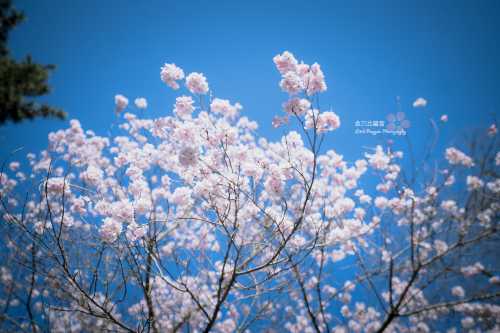App
Customer Support
Find Bookings
Popular Trip Moments
Experience the lively atmosphere in front of the temple by "drinking"! | [Kotohira Shrine] (Kotohira Town, Kagawa Prefecture, former province name: Sanuki) | [Kagawa Prefecture] A trip to Kotohira Shrine | Stairway to Shrine Heaven at Kotohira | Kotohira-cho 2 days and 1 night trip! | Escape the hustle and bustle: The ultimate relaxing choice in Takamatsu, Kagawa, Shikoku, Japan. | Kagawa|Asahi Shrine: A Cultural Treasure Completed in 40 Years, Where a One-Yen Coin Can Grant Your Wish | Kagawa|Challenge the Thousand Steps at Kotohira Shrine and Discover the Fascinating History of Konpira Dogs | Kotohiragū – Climbing to the Spirit of the Sea | Kagawa|A paradise for sake lovers: Kotohira Town’s super fun sake museum | Special Privileges of the Five Families in Kagawa | A must-visit once in a lifetime! A spiritual spot awaits at the top of 1,368 steps. | A Hong Kong girl traveled to Takamatsu for 5 days and 4 nights, visiting three attractions in one day. Chibi Maruko went to Kindohira Shrine, Yayoi Kusama Pumpkin, and Shikoku Aquarium | Travel to small cities in Japan / Takamatsu -> Okayama | Shikoku Travel Diary | 🇯🇵 [Kagawa Prefecture] Konpira Shrine North Garden! ^ ^ Together with Konpira-san (^^) | 🇯🇵 [Kagawa Prefecture] JR Kotohira Station 🚉 The gateway to Konpira Shrine! ^ ^ | [Cafe] Take a break before visiting Konpira Shrine! Kamitsubaki @ Kotoden Kotohira | Spring Journey to Kotohiragu Shrine | [Kagawa🇯🇵] Experience making udon in Udon Prefecture?! | [🇯🇵Kagawa・Kotohira] Enjoy authentic handmade udon noodles on the approach to Kotohira Shrine at "Konpira Udon Sando Store" | Mount Konpira | The nickname of "Konpira-san" | A journey to cleanse your body and soul - Challenge the most difficult shrine to visit - Kotohira-gu Shrine | [Kagawa🇯🇵] A day spent around Konpira-san | [Make udon, laugh, eat and learn! Make memories in Kagawa at Nakano Udon School] | Food experience after visiting Kotohira-gu Shrine 🍽️✨ | Shikoku Cherry Blossom Tour: JR Kotohira Station Cherry Blossoms | [Kagawa] Konpira-san, the guardian deity of maritime safety, a major tourist destination in Shikoku
Recommended Attractions at Popular Destinations
Popular Attractions in Bangkok | Popular Attractions in Manila | Popular Attractions in Tokyo | Popular Attractions in Taipei | Popular Attractions in Hong Kong | Popular Attractions in Seoul | Popular Attractions in Kuala Lumpur | Popular Attractions in Los Angeles | Popular Attractions in Shanghai | Popular Attractions in New York | Popular Attractions in Shenzhen | Popular Attractions in Osaka | Popular Attractions in Singapore | Popular Attractions in London | Popular Attractions in Guangzhou | Popular Attractions in San Francisco | Popular Attractions in Beijing | Popular Attractions in Macau | Popular Attractions in Bali | Popular Attractions in Jakarta | Popular Attractions in Paris | Popular Attractions in Ho Chi Minh City | Popular Attractions in Istanbul | Popular Attractions in Phuket | Popular Attractions in Chicago | Popular Attractions in Seattle | Popular Attractions in Toronto | Popular Attractions in Orlando | Popular Attractions in Cebu | Popular Attractions in Chiang Mai
Popular Restaurants in Kotohira
Musashi | Toraya Soba | Honetsukitori Tanakaya | Tentekomai | Kompira Udon, Sando | Shohachi Udon Kotohira | New Green | Kyuman Hompo Ishidan-Ya Main Store | Flower Watching Seibo Nukiri | Konpirasan Ishidan No Eki Tsurudaya | Komatsuya | Menkui Kotohira | Konpira Udon, Kojo Heisetsu | Cafe Yao | Udon-Ya Inoue | Fujinoie Shokudo | Dining & Cafe Choshokuraku | Mame Cafe | Sushi Ichi | Kompira Kaido | Shoyumame Hompo, Omotesando | Tengudo Miyagemono | 丸忠 Kappo Dining Maruchu | Minato | Soke Kompira Udon Tanukiya | Ogawa Udon | Machan Ramen | Kosome | Kasuga Sushi | Kin No Buta Kotohira Main Store
Popular Ranked Lists
Top 50 Luxury Hotels near Isparta | Top 10 Luxury Hotels near Noosaville | Top 50 Luxury Hotels near Portici | Popular Trending Attractions in Changzhou | Top 10 Trending Attractions in Jeju | Top 50 Must-Visit Restaurants in Kuala Lumpur | Top 50 Must-Visit Restaurants in Yangzhou | Top 50 Luxury Hotels near Neustift im Stubaital | Top 50 Must-Visit Restaurants in Bangkok | Top 10 Trending Attractions in Wuhan | Top 50 Must-Visit Restaurants in Langkawi | Top 10 Trending Attractions in Weihai | Popular Trending Attractions in Paris | Top 50 Luxury Hotels near Pontresina | Popular Trending Attractions in Anji | Top 20 Luxury Hotels near El Dorado County | Top 10 Luxury Hotels near Makarska | Popular Best Things to Do in Wuzhong | Top 10 Trending Attractions in Xi'an | Top 20 Luxury Hotels near Nagaur | Popular Best Things to Do in Tongliao | Top 20 Luxury Hotels near Radovljica | Top 10 Best Things to Do in Hinggan League | Popular Trending Attractions in Luoyang | Top 50 Must-Visit Restaurants in Milan | Top 50 Must-Visit Restaurants in Singapore | Top 50 Luxury Hotels near Costa Occidental | Top 50 Luxury Hotels near Sankt Johann im Pongau | Popular Trending Attractions in Tonglu | Popular Trending Attractions in Daxin
About
Payment Methods
Our Partners
Copyright © 2025 Trip.com Travel Singapore Pte. Ltd. All rights reserved
Site Operator: Trip.com Travel Singapore Pte. Ltd.
Site Operator: Trip.com Travel Singapore Pte. Ltd.






















